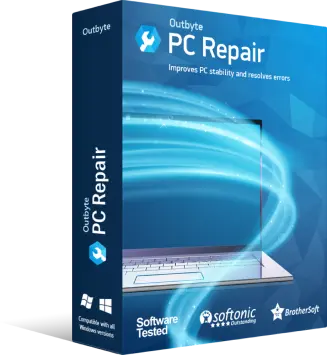Repair Utility
- File name: pc-repair-setup.exe
- Tool''s Developer: Outbyte
- Certified by: Symantec
- Download Size: 24 MB
- Downloaded: 1,143,473 times
-
Rating:

 Start Download
Start Download
Windows Operating Systems



USB 2.0 Wireless 802.11n Driver
Wireless connectivity has become a cornerstone of modern computing, and USB 2.0 Wireless 802.11n adapters remain a popular choice for adding Wi-Fi capabilities to devices lacking built-in support. However, driver-related issues can disrupt this convenience, leading to frustrating connectivity problems. This article explores the root causes of USB 2.0 Wireless 802.11n driver failures, provides actionable solutions, and summarizes key takeaways to ensure seamless wireless performance.
1. Common Causes of USB 2.0 Wireless 802.11n Driver IssuesDriver problems for USB 2.0 Wireless 802.11n adapters often stem from a mix of software, hardware, and environmental factors. Understanding these causes is the first step toward resolution:
- Outdated or Corrupted Drivers
Over time, drivers may become outdated due to OS updates or corrupted by malware, conflicting software, or improper installations. An obsolete driver can fail to communicate with the operating system, causing dropped connections or adapter malfunctions.
- USB Port Compatibility and Power Limitations
USB 2.0 ports deliver limited power (up to 500mA) compared to USB 3.0. Some 802.11n adapters require stable power for optimal performance. Plugging the adapter into a faulty or underpowered port can lead to intermittent disconnections.
- Operating System Conflicts
Newer operating systems like Windows 10 or 11 may lack native support for older drivers. Incompatibility can prevent the adapter from being recognized or functioning correctly.
- Interference and Signal Obstruction
The 802.11n standard operates on 2.4GHz and 5GHz bands, which are prone to interference from other devices like microwaves, Bluetooth gadgets, or neighboring Wi-Fi networks. Physical obstructions (walls, metal objects) can also weaken signals, mimicking driver issues.
- Incorrect Driver Installation
Installing the wrong driver version, skipping manufacturer-specific software, or relying on generic Windows drivers can result in subpar performance or complete failure.
Follow these practical steps to troubleshoot and fix USB 2.0 Wireless 802.11n driver problems:
- Update or Reinstall the Driver
- Manual Update
- Right-click the Start menu and select Device Manager
- Expand Network Adapters, right-click your wireless adapter, and select Update Driver
- Choose Search automatically for updated driver software and follow prompts
- Manufacturer’s Website
Visit the adapter manufacturer’s support page (e.g., TP-Link, Netgear), locate the correct driver for your model and OS version, and install it manually
- Manual Update
- Verify USB Port Functionality
- Test the adapter on multiple USB 2.0 ports to rule out port-specific issues
- Avoid using USB hubs, as they may not provide sufficient power. Connect the adapter directly to the computer
- Adjust Power Management Settings
- In Device Manager, right-click the wireless adapter and select Properties
- Under the Power Management tab, uncheck Allow the computer to turn off this device to save power
- Mitigate Wireless Interference
- Reposition the adapter closer to the router or use a USB extension cable to reduce physical obstructions
- Access your router’s admin panel and switch to a less congested Wi-Fi channel (e.g., Channels 1, 6, or 11 for 2.4GHz)
- Roll Back or Uninstall Problematic Drivers
- In Device Manager, right-click the adapter, select Properties, and under the Driver tab, use Roll Back Driver if available
- If rolling back fails, select Uninstall Device, then restart your PC to trigger automatic reinstallation
- Check for OS Updates
Install the latest Windows updates via Settings > Update & Security, as Microsoft often patches compatibility issues
- Test with Another Device
Connect the adapter to another computer to determine if the issue is hardware-related. If it fails universally, consider replacing the adapter
USB 2.0 Wireless 802.11n drivers, while reliable, require regular maintenance to avoid disruptions. Outdated software, power limitations, and environmental factors are typical culprits, but most issues can be resolved through systematic troubleshooting. Prioritize updating drivers from trusted sources, ensure proper USB port functionality, and optimize your wireless environment for stronger signals.
By following the steps outlined above, users can restore connectivity and enjoy the flexibility of wireless networking without unnecessary downtime. Remember: when in doubt, consult the adapter’s manufacturer for tailored support, as driver requirements vary by brand and model. With proactive management, even older hardware like USB 2.0 adapters can deliver consistent, high-performance Wi-Fi in today’s connected world.
|
Ensure seamless wireless connectivity on your Windows 7 64-bit system with this USB 2.0 Wireless 802.11n driver. Designed for compatibility and stable performance, it enables high-speed Wi-Fi access, supports 802.11n standards, and optimizes network reliability for older hardware. Download to upgrade or restore wireless functionality effortlessly.
|
|
Learn how to install Bluetooth on Windows 11 by enabling the feature, checking device compatibility, installing drivers, and troubleshooting common issues. Follow step-by-step instructions to connect your devices seamlessly and maintain wireless connectivity.
|
|
Learn how to set up your Epson L3150 printer with this step-by-step guide. From unboxing to software installation, wireless configuration, and initial print testing, follow clear instructions to ensure a seamless setup. Includes tips for troubleshooting common issues and optimizing printer performance.
|
|
The USB 2.0 Wireless 802.11n Driver enables seamless connectivity for USB-compatible devices to high-speed wireless networks. This driver supports the 802.11n Wi-Fi standard, offering faster data transfer rates, improved range, and stable performance for laptops, desktops, and peripherals. Ensure compatibility with your operating system for optimal wireless functionality.
|
|
Struggling with Realtek HD Audio Driver Error 0001 during installation? This common issue often stems from driver conflicts, corrupted files, or incorrect system configurations. Learn quick fixes like updating drivers manually, disabling conflicting software, or using Windows troubleshooting tools to resolve the error and restore audio functionality. Follow our step-by-step guide to troubleshoot efficiently.
|
|
The Intel HD Audio Device (Function 01) is an integrated audio controller with Vendor ID 8086, Device ID 2805, Subsystem ID 80860101, and Revision 100. This hardware component handles audio processing and is commonly found in Intel-based systems, providing standard sound functionality for drivers and system compatibility.
|
|
Learn how to set up your Epson L375 printer with this step-by-step guide. Unbox, connect to power and your device, install drivers via Epson’s website or included CD, and configure settings for seamless printing, scanning, and copying. Troubleshoot common issues for a smooth installation.
|
|
Download the latest HP LaserJet P1005 printer driver for seamless device compatibility and performance. Ensure smooth installation on Windows OS by accessing the official HP website or trusted sources. Always verify driver authenticity to avoid security risks and maintain optimal printing functionality.
|
|
Experiencing a lagging wireless mouse? Restore smooth performance with these quick fixes: check battery levels, reduce interference from other devices, ensure the receiver is within range, update or reinstall drivers, and reconnect the mouse. Simple adjustments can eliminate delays and boost responsiveness instantly.
|
|
Learn how to set up your HP 410 printer effortlessly with this detailed guide. Follow step-by-step instructions for unboxing, connecting via USB or Wi-Fi, installing drivers, and printing your first page. Simplify installation and troubleshoot common issues quickly.
|
| See all queries |



